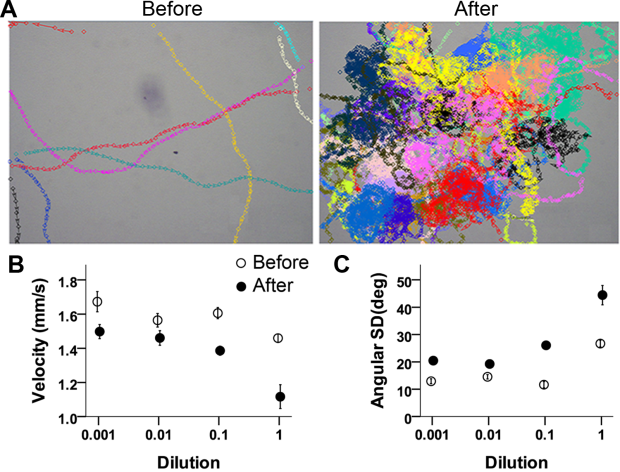Published in PLOS Neglected Tropical Diseases, this is a collaborative project with Scott Cummins’ group at the University of the Sunshine Coast in Australia. We contribute behavioural video analysis alongside “secretomics” to show parasitic schistisomes change their behaviour in the presence of peptides released by Biomphalaria snails.

Here’s our summary: In aquatic environments, where the vast majority of animals live in darkness, key relationships are often formed and maintained by chemical communication (including smell and taste). Parasites with an aquatic life phase rely on an exquisite sense of chemosensation to detect host biomolecules (kairomones), allowing them to locate and infect their host. Our study identifies the first kairomone released by the freshwater gastropod snail Biomphalaria glabrata, an intermediate host for the helminth blood fluke parasite Schistosoma mansoni. This is a key aspect of the S. mansoni life-cycle that ultimately leads to human infection, causing the disease schistosomiasis (or bilharzia), which is considered the most devastating human helminth infection in terms of global morbidity and mortality. The kairomone we identify is a peptide that does not appear to share any similarity with any other known animal peptide. This information will be helpful as we explore methods to interrupt parasite infection, and therefore break the cycle of infection that causes a major human disease.
Citation: Wang T, Wyeth RC, Liang D, Bose U, Ni G, McManus DP, et al. (2019) A Biomphalaria glabrata peptide that stimulates significant behaviour modifications in aquatic free-living Schistosoma mansoni miracidia. PLoS Negl Trop Dis 13(1): e0006948. https://doi.org/10.1371/journal.pntd.0006948
